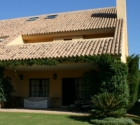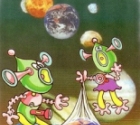
As Israel matures as a wine market and wine producing region, the country’s ever-expanding wineries are offering more and more diversity of styles and varietals. It’s exciting for the consumer, as well as a wine explorer like me, to see not only what will come next but what can be done well. A refreshing alternative to dry and semi-dry table wines, or even decadent dessert wines, is the expanding range of sparkling wines that has appeared and found traction at Israeli wineries.
The most famous sparkling wines in the world are those from the Champagne region in France and that region has had a tradition of making fabulous bubbly for hundreds of years. Few words can conjure luxury and a sense of celebration in our minds as much as Champagne. The French, however, have not held a monopoly on sparkling wines as winemakers from, most notably, Spain (Cava), Italy (Prosecco and Spumante) and Germany (Sekht) have established their own distinctive and respected effervescent offerings. Although Israel will never challenge these other regions for the quantity they produce, there’s nothing holding Israel back from making quality sparkling wines for both the Israeli consumer and fans of Israeli or kosher wines in the Diaspora.
Making wine sparkle is in theory easier than one might think. In fermenting the sugar of grapes when making wine the principal by products are alcohol and carbon dioxide. With most still wines (as non-sparkling wines are referred to in the industry) the carbon dioxide is released after fermentation, though with sparkling wines it’s typically retained during a secondary fermentation. How much carbonation is desired determines the two principal distinctive types of Israeli sparkling wine: Champagne-style sparkling dry wine and “frizzante”, the slightly sparkling and slightly sweet Moscato di Asti style wines that trace back to their Italian origins.
The Israeli sparkling wines most reminiscent of Champagne typically use the same type of wine grapes and similar manufacturing methods as those in Champagne. There, the most common blend is a combination of the white wine grape Chardonnay and the red grape Pinot Noir (made with as little skin contact as possible to retain Champagne’s famous golden hue). These principal Champagne grapes are used in Golan Heights’ Gamla Brut. Also, it’s made in the “methode champenoise”, where the secondary fermentation process occurs in the bottle. The “Brut” in Gamla Brut refers to the dryness of a sparkling wine. As in Champagne, a wide range of sweetness is available, although Brut is by far the most popular.
Another example of a French-style Israeli sparkling wine is Pelter’s Blanc de Blanc. Also made in the same “methode champenoise”, this more limited release features fermented Chardonnay grapes. As the name Blanc de Blanc implies, it is a white wine from white grapes. Vino Cigar, Tel Aviv’s notable wine shop, keeps a good stock of the wine, and manager Jeremy Levine is a vocal advocate of it. An additional twist on Blanc de Blanc is Tishbi’s new Tishbi Brut made from French Columbard grapes. This wine holds a lot of promise if it gains the audience it well deserves, as French Columbard is extensively planted in Israel and better suited for larger tracks of Israel’s warmer weather vineyards than the more limited areas with the cooler conditions that are suitable for Chardonnay or Pinot Noir grapes.
As the Champagne-style sparklers tend to aim for a more discerning or elitist wine consumer, the Moscato-style wines tend to be more accessible mass market people pleasers that are noticeably sweeter with lower alcohol and less bubbles, and often cost one half to one quarter of the price of their more prestigious competitors. These mostly Muscat grape concoctions are, oddly enough, quite grapey (something wine experts tend to disparage in favor of more complex citrus, apple, pear, peach or tropical flavors often expressed in other white wine selections). Golan’s Moscato has been very successful, not only in Israel but also overseas. In California, I often saw it as a popular choice in wine shops as well as a good match for spicy Asian cuisine. Carmel and Dalton have also been offering a Moscato wine to create a range of choices for Moscato maniacs.
At your next celebration, watch the expressions of your guests change as you pop open a bottle of Israeli bubbly. You’re apt to see a sparkle in their eyes in anticipation of the medley of sensations one bottle and its millions of bubbles promise to deliver.
 DEAR EDITOR 152
DEAR EDITOR 152 TIDBITS, COMMENTS AND ODDITIES-152
TIDBITS, COMMENTS AND ODDITIES-152 TAKE IT LIKE A SOLDIER - A MEMOIR - A Review
TAKE IT LIKE A SOLDIER - A MEMOIR - A Review-1516356428.jpg) Hand in Hand Food Pantry
Hand in Hand Food Pantry Forever Slim
Forever Slim Food Foolish
Food Foolish David Rhodes
David Rhodes